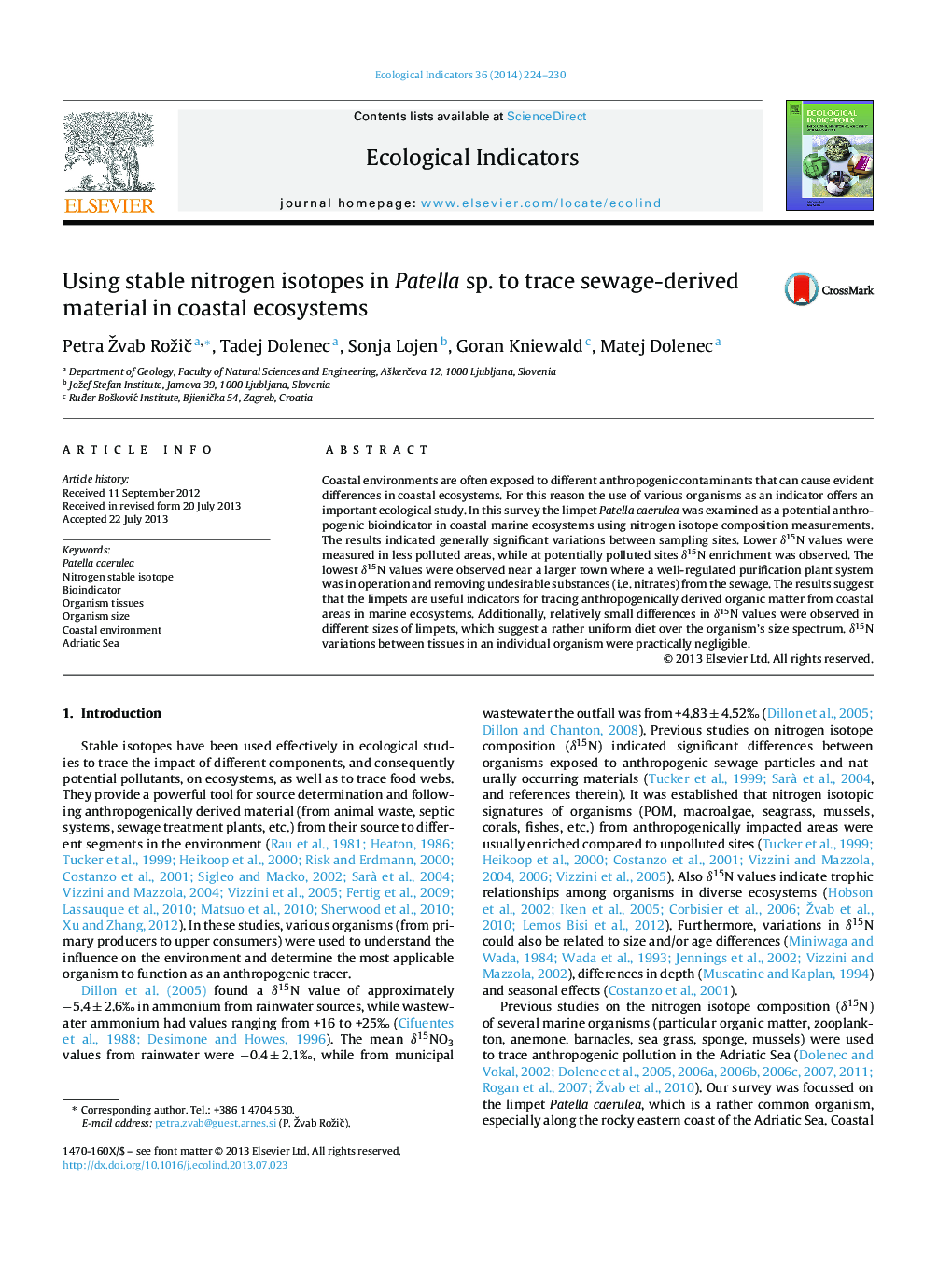| Article ID | Journal | Published Year | Pages | File Type |
|---|---|---|---|---|
| 4373314 | Ecological Indicators | 2014 | 7 Pages |
•Patella sp. is found to be useful bioindicator for tracing anthropogenically derived organic matter from coastal areas in marine ecosystem.•Limpets from unpolluted areas showed lower δ15NAir values and enrichment at potentially polluted sites.•Sewage treatment processes reduce the nitrogen isotope composition.•Small differences in δ15NAir between limpet sizes suggest a rather uniform diet of organisms during their growth.•No significant δ15NAir variations were observed between tissues in an individual organism.
Coastal environments are often exposed to different anthropogenic contaminants that can cause evident differences in coastal ecosystems. For this reason the use of various organisms as an indicator offers an important ecological study. In this survey the limpet Patella caerulea was examined as a potential anthropogenic bioindicator in coastal marine ecosystems using nitrogen isotope composition measurements. The results indicated generally significant variations between sampling sites. Lower δ15N values were measured in less polluted areas, while at potentially polluted sites δ15N enrichment was observed. The lowest δ15N values were observed near a larger town where a well-regulated purification plant system was in operation and removing undesirable substances (i.e. nitrates) from the sewage. The results suggest that the limpets are useful indicators for tracing anthropogenically derived organic matter from coastal areas in marine ecosystems. Additionally, relatively small differences in δ15N values were observed in different sizes of limpets, which suggest a rather uniform diet over the organism's size spectrum. δ15N variations between tissues in an individual organism were practically negligible.
